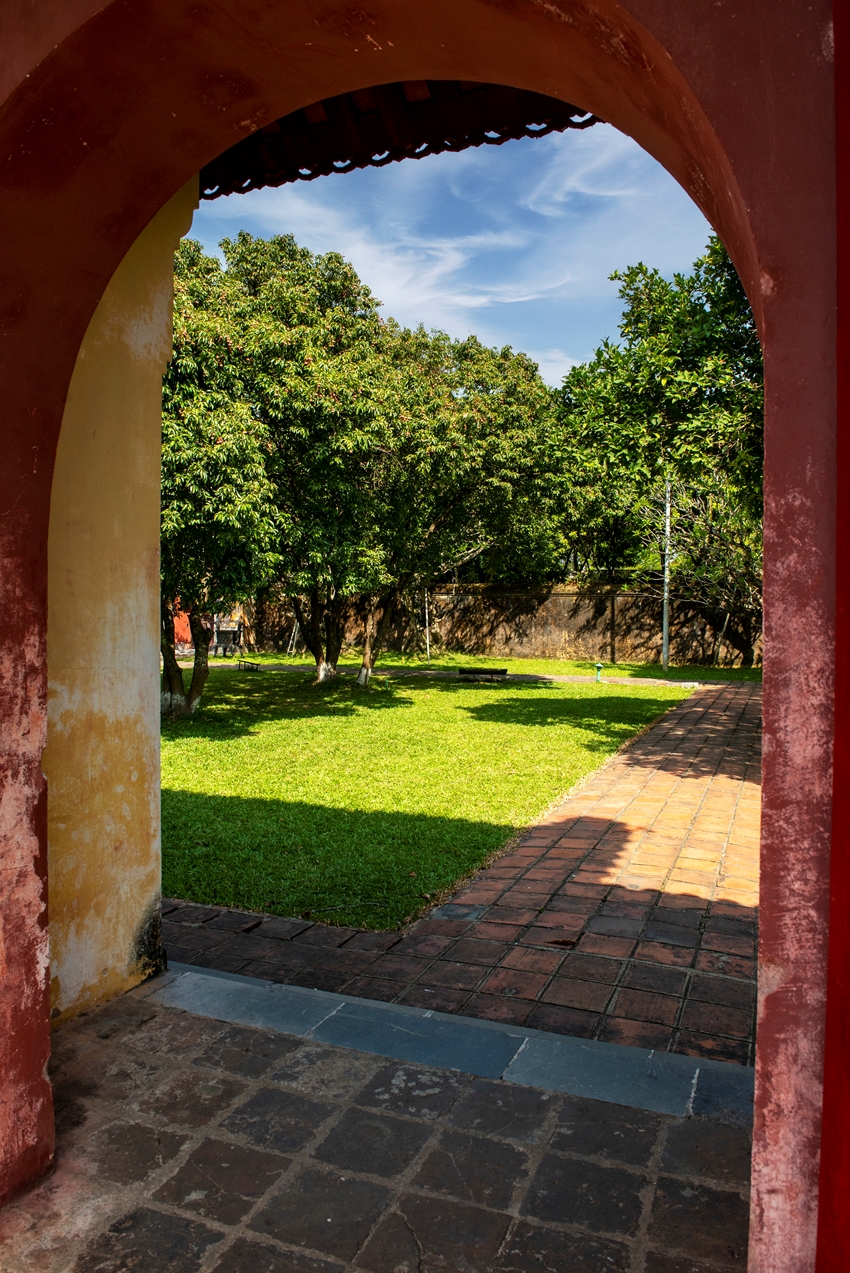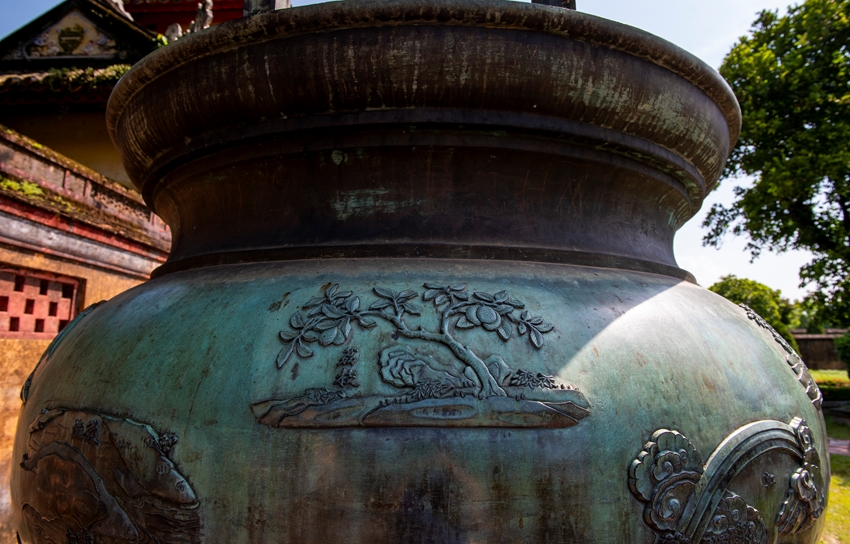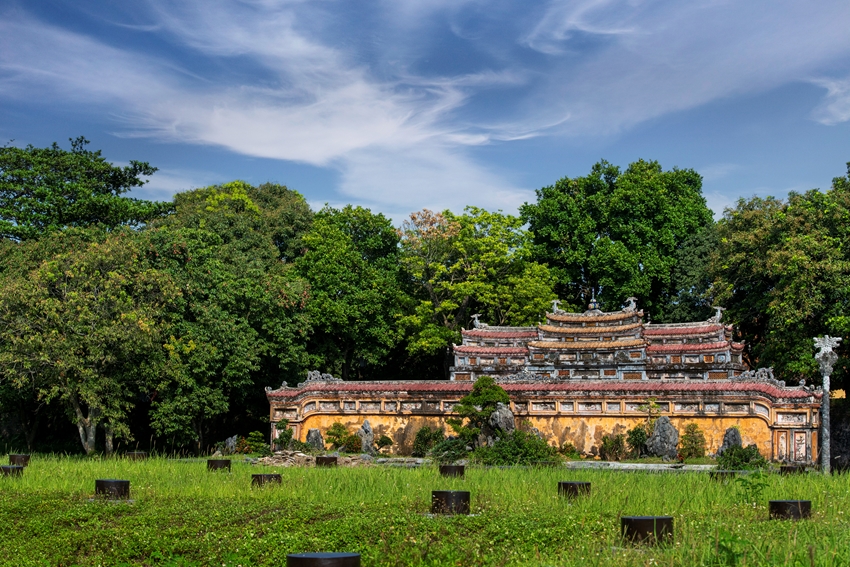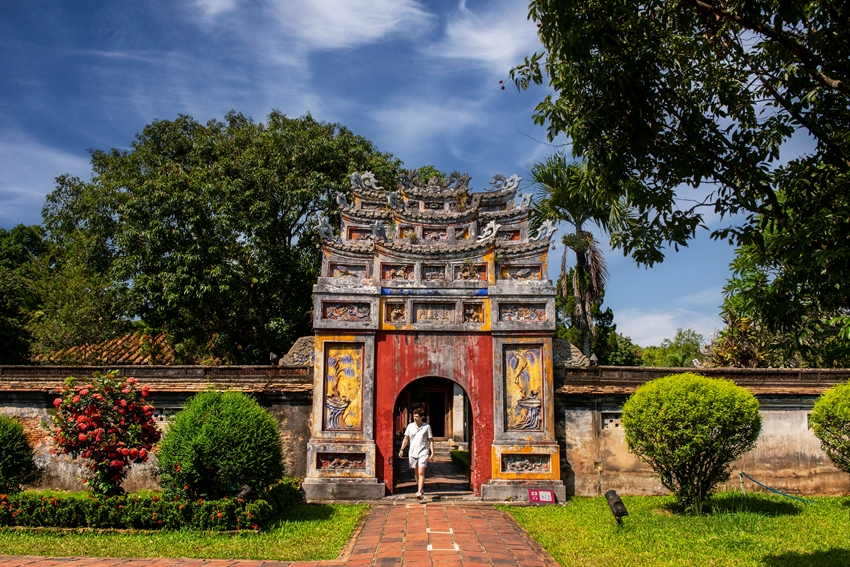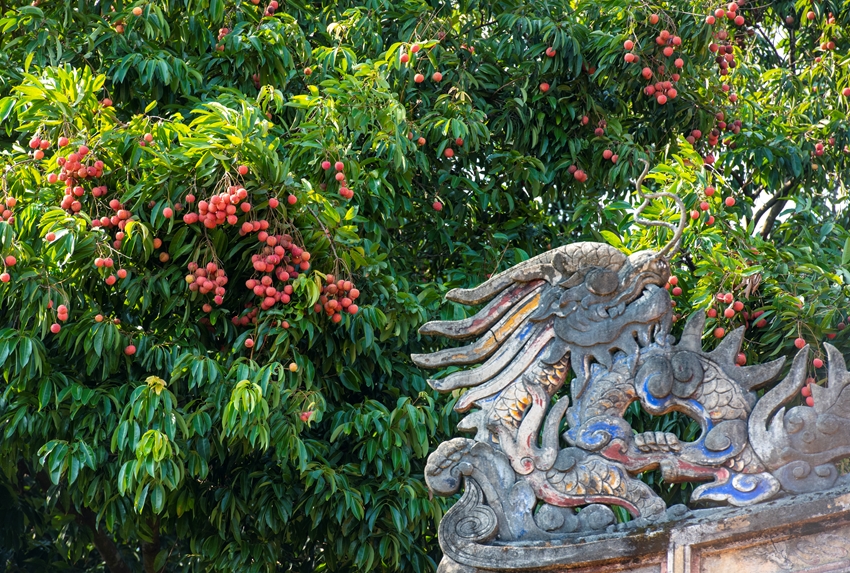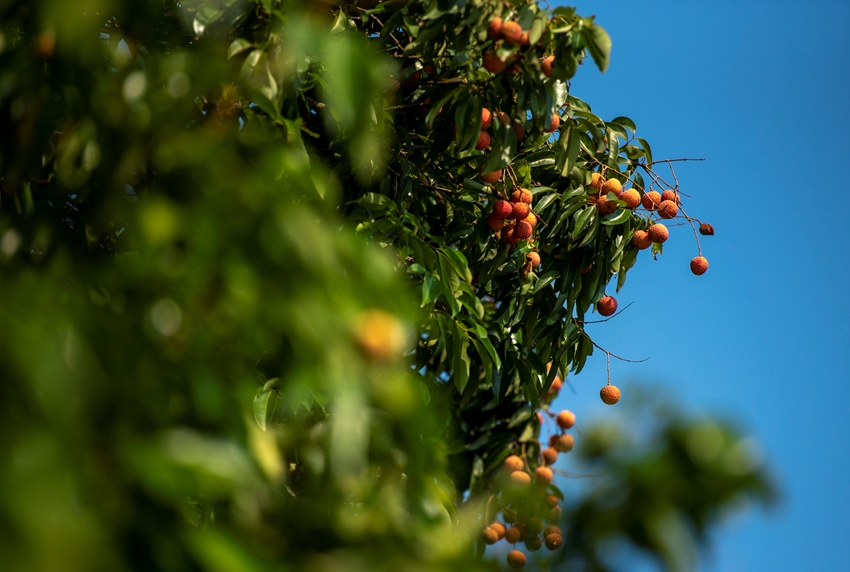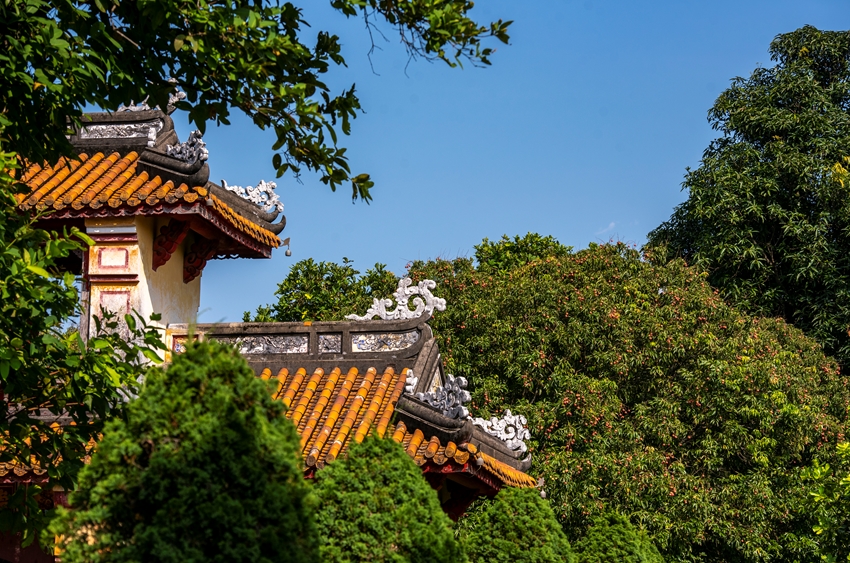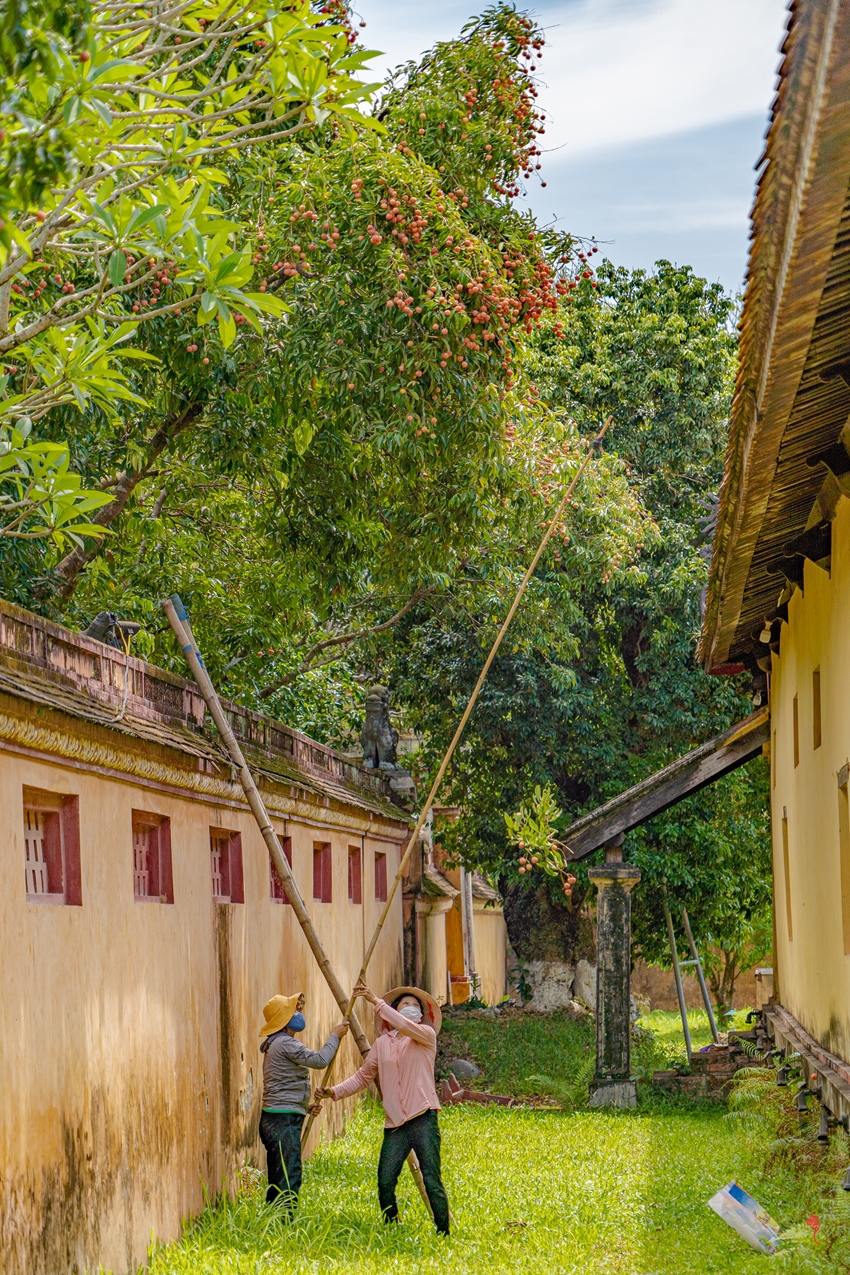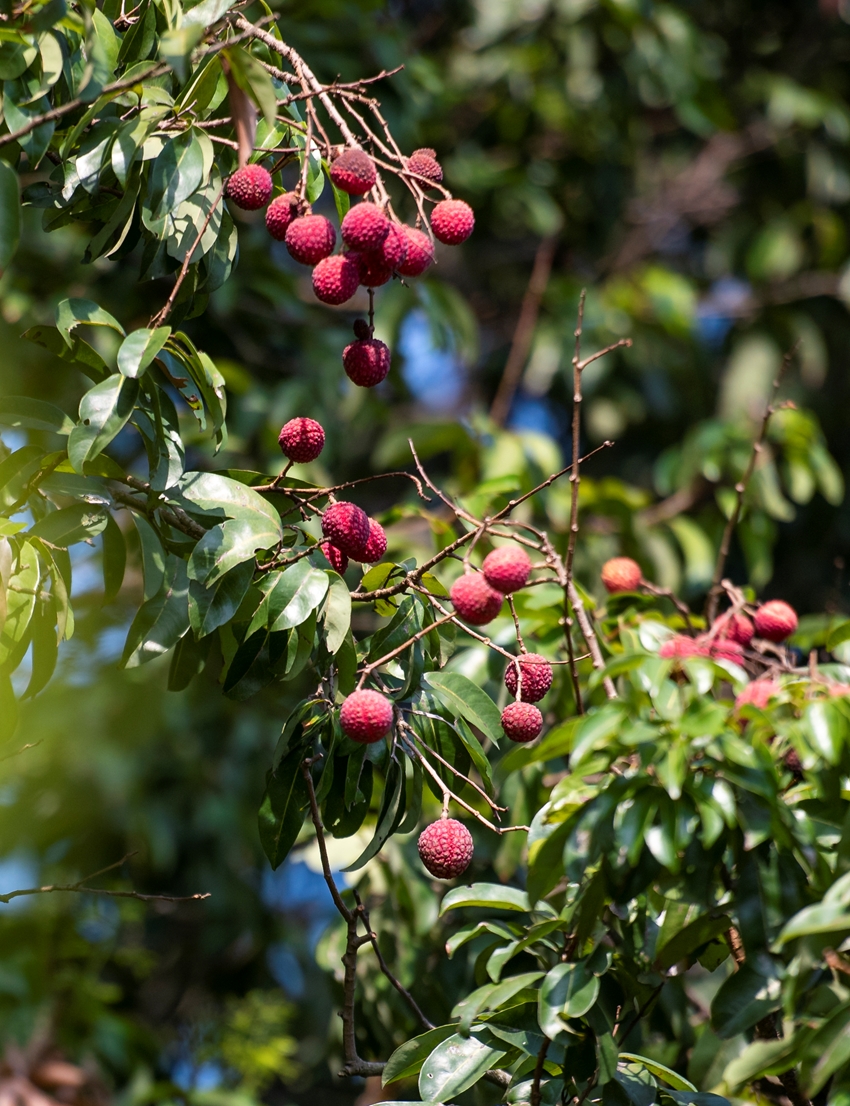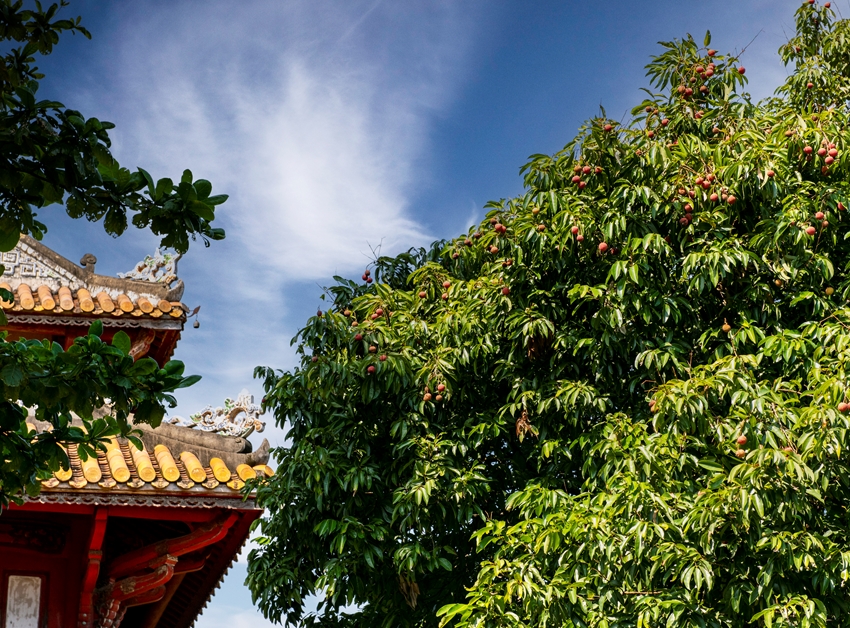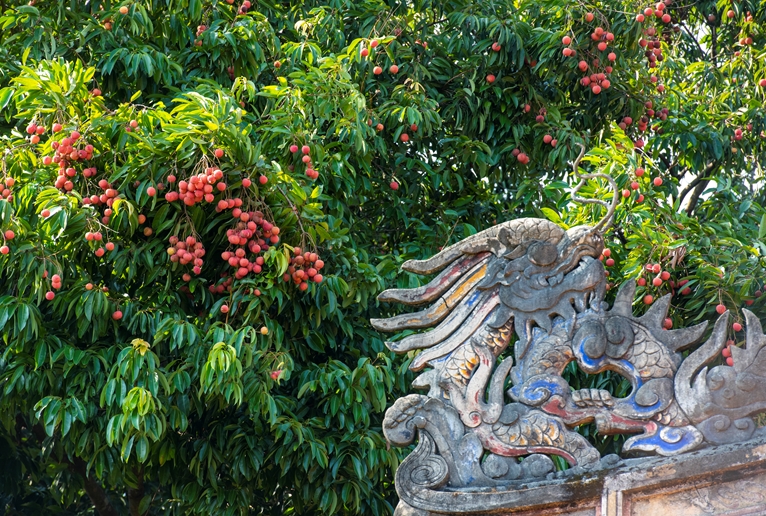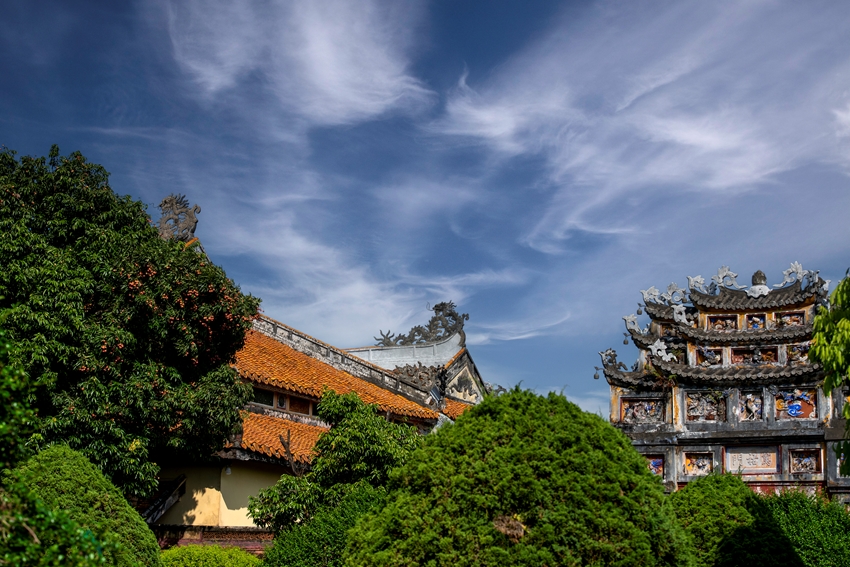In the grounds of The To Temple, Thai To Temple, Phung Tien Palace, Dien Tho Palace, or around Ngoc Dich Lake inside Hue Imperial Citadel, a large number of lychee trees are grown, and there are ancient trees which are big enough for one to two people to embrace around them. Perhaps, these ancient lychee trees are bigger than the lychee tree in Thanh Ha, Chi Linh (Hai Duong) and the one in the palace of the An Thuong princess (Hue), which is often mentioned.
According to the ancients, the outer skin of lychee fruit is red leathery, while its inner skin is as thin as purple silk, the flesh inside is as brightly white as snow, and the juice is both sweet and a bit sour like com ruou (Vietnamese fermented glutinous rice). If the fruit leaves the branch for one day, its color will be changed, the scent will be changed in the second day, and the taste will be changed in the third day (or may be rotten).
According to Oriental medicine practitioners, lychee fruit can be used as a medicine to regulate the blood vessels, and treat boils, toothache, or hiccups, painful testicle in children, and also be used as a blood tonic. In the Northern region, Hung Yen lychee fruit is famous for its deliciousness.
In Hue Imperial Citadel, lychee trees, which were exclusively offered to the King, are very precious, and their fruit is delicious. These trees have been still preserved and protected to this day. This season, if you visit Hue Imperial Citadel, you will be able to admire lychee trees laden with fruit under the summer sunlight, and take beautiful photos with the precious lychee trees.
By Hue News
Nguồn ” Báo Thừa Thiên Huế online “
